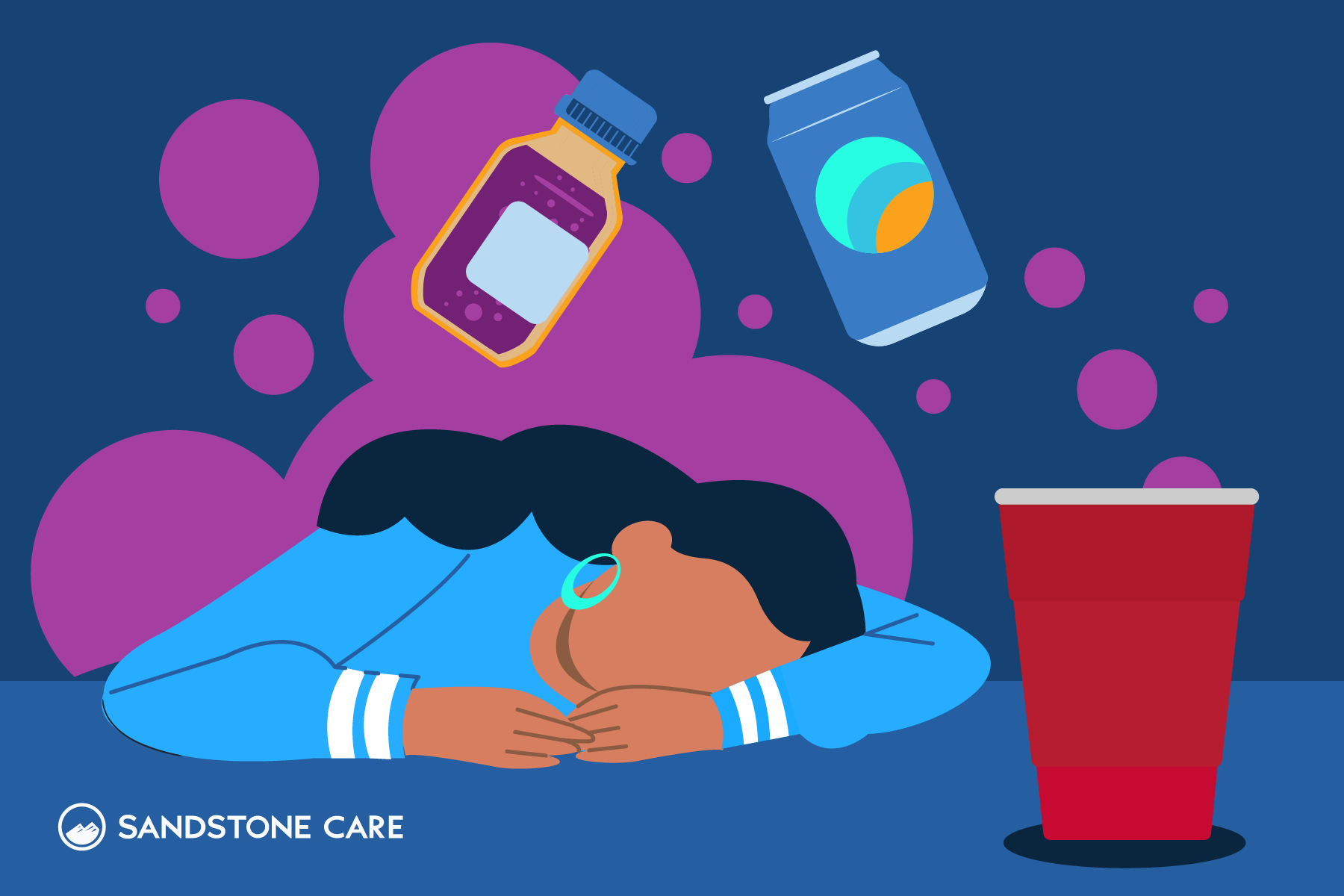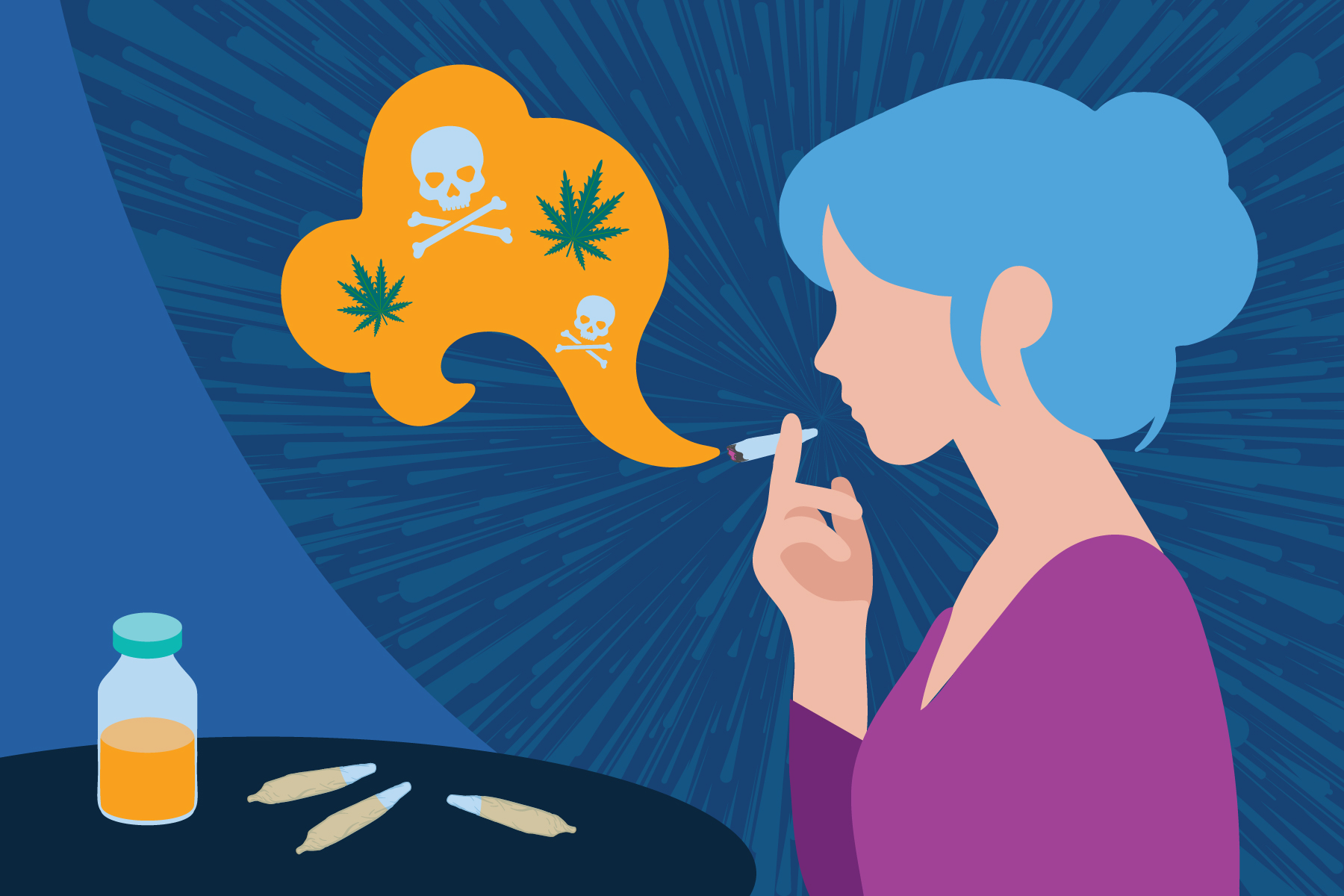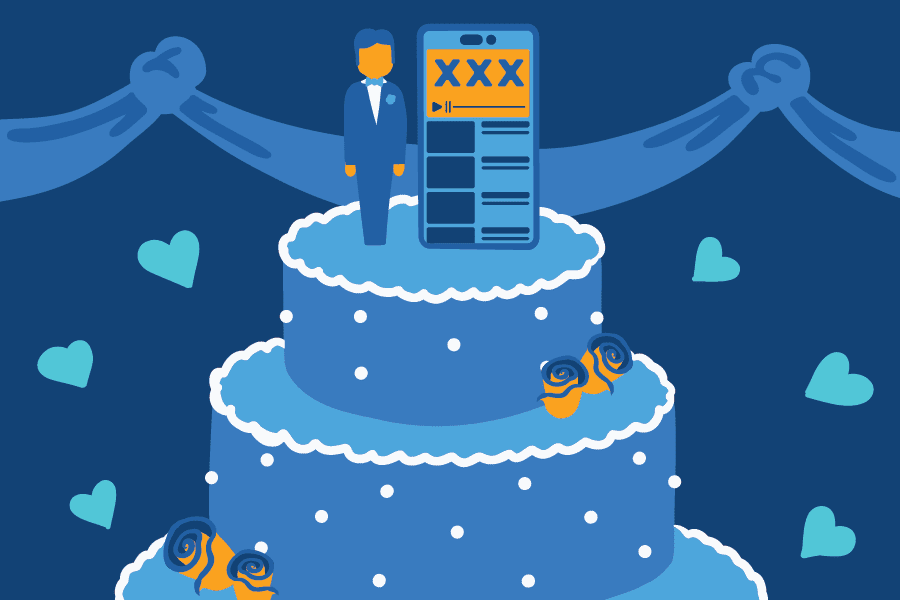Table of Contents
- What Are Some Signs of Drug Abuse in Teenagers?
- What Are the Causes of Teen Substance Use?
- How Does Substance Use and Addiction Affect Teens?
- What Are Some Risk Factors of Teen Drug Use?
- What Are the Most Common Drugs Used by Teens?
- What Are Addiction or Substance Use Treatment Options for Teens?
- What Are the Most Common Misconceptions About Drug Abuse and Addiction Among Youth?
- What Are the Symptoms of an Adolescent Addiction?
- How Does Drug Addiction Affect the Brain?
What Are Some Signs of Drug Abuse in Teenagers?
Some warning signs of drug use in teenagers may include:
- Mood swings
- Loss of interest in things they once liked
- Fluctuation in eating habits; eating more or less than usual
- Changing friends frequently
- Extreme tiredness
- Having problems at school; getting bad grades, skipping class, getting in trouble
- Spending a lot of time alone; locking themselves in their room or bathroom for long periods of time
- Lying and stealing
- Poor concentration or focus
- Change in speech; slurred speech or talking unusually fast
- Having problems with family and friends
- Being easily irritated or angry
- Violating curfew restrictions
- Lack of motivation
- Changes in appearance; red eyes, dilated pupils
- Possession of drug paraphernalia
What Are the Causes of Teen Substance Use?
Teens may seek to use substances for a variety of reasons.
1. Friend groups and peers have a big impact on the decisions teens make.
The transition into middle and high school can be a stressful and challenging time. Many young people may worry about fitting in. When people around them use substances, a young person may fall victim to peer pressure and try it themselves.
Being around people who use drugs makes teens more susceptible to trying it themselves. Even if it begins as an occasional occurrence, it can quickly become an addiction.
2. Mental health issues are common amongst teenagers.
A teen may begin to use drugs and alcohol to self-medicate or feel better. Substance use disorders commonly co-occur with mental health disorders. As they are going through multiple types of development, it may be difficult to understand healthy coping mechanisms.
Teens may use these substances as a way to feel better, to counteract feelings of numbness, or as an escape from reality.
3. Another reason substance use begins in teenagers is that they want to experiment.
Entering into high school or college, a lot of things are new. A teenager may hear stories of others using drugs and want to experience it for themselves. However, even taking certain drugs one time can eventually lead to addiction.
4. Other drugs use occurs to improve performance in athletics or academics.
Teenagers face a lot of pressure to do well, whether it is in sports or school. Many people go through high school with the end goal of getting into a good college, which may cause teens to use any means necessary to succeed.
For example, Adderall is a commonly used substance by teens. Adderall is a stimulant that can increase alertness, heighten endurance, and improve reaction time.
However, stimulants can have effects including hypertension, heart attack, anxiety attacks, aggression, and psychosis.
5. Transitioning into adulthood may also mean that teens would want to test their freedom.
As teens become older, they get to make more of their own decisions and may have easier access to things like illicit drugs and alcohol.
Having those things accessible to them and making their own decisions might cause teenagers to take advantage of the situation.
How Does Substance Use and Addiction Affect Teens?
Substance abuse and addiction have a large negative impact on teens’ mental and physical health.
Substance use and addiction also cause major damage to teens’ brain development.
The earlier substance abuse begins, the more likely a person becomes addicted later on in life.
As teenagers and young adults, it may not seem like a big deal to try drugs because they are young and healthy. The truth is that drugs have major effects on the brain, no matter who you are.
It can only take one time for drugs to alter the natural systems and chemicals in your brain and become a problem.
As someone uses a drug repeatedly, even if it’s on occasion, the brain begins to seek out the drug, not to feel “high” but to feel somewhat normal again, which eventually leads to addiction.
Not only does substance abuse have negative effects on your mental health, but it also takes an extreme toll on your physical well-being.
Substance abuse in teens can lead to health problems such as:
- Heart disease
- High or low blood pressure
- Sleep disorders
- Co-occurring mental health disorders
- Cancers
Substance abuse can also affect the growth and development of teens.
Since drugs impact the brain, it affects the ability to make good decisions, which can cause teens to engage in risky behaviors, such as unprotected sex or driving under the influence.
Substance abuse and addiction can result in unintentional suicide.
What Are Some Risk Factors of Teen Drug Use?
Some teenagers are more vulnerable to substance use disorders and addiction.
These risk factors may include:
- Lack of supervision makes it easier for teens to begin or get away with drug use
- Being around people who use drugs makes them more susceptible to peer pressure
- History of stressful or traumatic life experiences such as physical or sexual abuse
- Genetics
- Prenatal exposure to drugs or alcohol
- Lack of connection to schoolwork or poor school performance
- Rejection of sexual orientation or gender identity by families or friends
- Mental Health Issues
Aside from these risk factors, environmental factors like home life or problems within the family can play a large role in supporting or counteracting certain factors that may lead a teen to engage in substance use.
What Are the Most Common Drugs Used by Teens?
The most commonly used drugs by teens include alcohol, marijuana, and tobacco.
According to a study done by Alcohol Research, the proportion of youth who engage in binge drinking remains high. Binge drinking involves a pattern of consuming alcohol that brings the blood alcohol content to 0.08 percent or higher.
Although adolescents consume alcohol less frequently than adults, they tend to drink higher quantities of alcohol per occasion.
Binge drinking for teens can result in harm such as alcohol poisoning, blackout, involvement in car crashes, alcohol-related assault, increased risk for sexually transmitted infections, and problems in school.
According to the 2020 Monitoring the Future survey overview done by the NIDA, between 2018 and 2020, marijuana vaping increased significantly.
Young teens also tend to lean towards using inhalants, which are chemicals found in households that teens use to get high by breathing in fumes.
Things like paint thinner, nail polish remover, or hair spray are common because they are easily accessible compared to other drugs. Inhalants are dangerous because they can damage your brain and body and, in some cases, cause death.
Inhalants may cause short-term effects such as; slurred speech, lack of coordination, dizziness, or hallucinations. Long-term effects may include liver or kidney damage, spasms, impacted behavioral development, and brain damage.
Following alcohol, marijuana, and tobacco, would be amphetamines, the top drug used in this category being Adderall, according to a study done by the NIH.
Stimulants like Adderall and opioid pain relievers like Vicodin and Oxycontin are more common among older teenagers. Prescription drug abuse can result in life-threatening consequences.
Another stimulant that can affect teens is methamphetamine. Also known as meth, it is a highly dangerous and addictive drug. Meth can cause permanent brain damage and other long-term effects, especially when use begins at a young age.
According to the CDC, about half of 9th through 12th graders reported marijuana use, about 40% reported to have tried cigarettes, and about 20% reported using prescription drugs without a prescription.
What Are Addiction or Substance Use Treatment Options for Teens?
Substance use and addiction treatment come in various forms specialized for the person’s needs.
The American Academy of Pediatrics recommends a course of action that involves screening, brief intervention, and referral to treatment based on the adolescents’ needs.
The approach to treatment is different for teens and adolescents compared to adults because teens have different developmental needs.
It is important to consult with pediatricians, treatment providers, and mental health professionals to help determine the best course of action.
Some examples of treatments and support available for teens include:
- Cognitive-behavioral therapy (CBT): CBT is a common and effective therapy for mental health issues, SUD, and addiction. It focuses on helping adolescents develop better coping and problem-solving skills to help deal with feelings that trigger substance use.
- Experiential treatment: Many teens learn best through exploration and new experiences. Experiential treatment programs may include art therapy, yoga, or a variety of different physical activities. These experiences help encourage a healthier lifestyle.
- Family therapy: Family counseling is an important part of teen recovery. It involves all family members in order to address family dynamics, communication, and parenting skills to resolve conflict and build a solid foundation.
- Support groups: A support group creates a safe environment for teens to talk about their feelings and share experiences. An important part of recovery involves good friends that support you and build positive relationships.
Depending on a person’s needs, they can decide whether inpatient or outpatient treatment is most suitable for their situation.
It is helpful to research if there are treatment centers near you.
Your doctor or pediatrician may suggest inpatient treatment. Inpatient treatment involves staying overnight at a rehabilitation facility or clinic. During inpatient treatment, you receive 24-hour care.
Outpatient treatment can be a good choice for teens because it allows them to receive treatment from home while still keeping up with responsibilities like school. It is also very helpful to have a healthy home environment when receiving outpatient treatment.
There are also ways parents, family members, and friends can help prevent substance abuse problems.
One way to prevent drug use in teens is to have good communication. Being open will encourage teens to be more comfortable sharing their feelings or what they’re going through. Good communication can also make it easier to recognize when something is wrong.
Teaching teens confidence and self-awareness also helps them reduce conflict and build better problem-solving skills.
Having clear boundaries and limits teaches teens responsibility and shows them you care. Supervision keeps parents involved and gives more chances to promote safety in teens.
Finally, being familiar with your teens’ friends can give you an idea of the people they are around a lot of the time and help you build better trust between you and them.
What Are the Most Common Misconceptions About Drug Abuse and Addiction Among Youth?
When it comes to drug abuse and addiction, poor education and a lack of knowledge lead to common misconceptions.
Misconception #1: Drug abuse and addiction are voluntary.
The first few times one uses drugs, it is their choice. However, when they use it more frequently, the drug begins to change your brain. After a while, using drugs becomes compulsive rather than voluntary. Especially in teens, as their brains are still developing.
Misconception #2: Alcohol is not a drug, and alcohol abuse is not as serious as other drugs.
Alcohol is a drug, and underage drinking has become so normalized that it has made people desensitized that alcohol damages the brain and the body. Especially when a person begins drinking so young, they are predisposed to long-term issues and addiction.
Misconception #3: Prescription drugs are safer than illicit drugs.
Some teens may think that prescription drugs are safer than illicit drugs because a doctor prescribes them. However, when medicines are used for alternate reasons or by someone who has not been prescribed them, they are just as dangerous as any other drug.
Misconception #4: Bad kids use drugs and become addicts.
Addiction does not reflect a person’s character. Addiction is a disease and should get treated as such.
Misconception #5: The parent of a teen struggling with addiction wasn’t paying attention or setting good examples.
Homelife isn’t the only influence on teens. They are exposed to different things on a daily basis at school, in the media, and outside of the home. There is no way to constantly supervise teens – especially as they become older.
Although environmental factors can impact the likelihood of becoming addicted to drugs, it is not a reflection of parenting capabilities.
Misconception #6: Wanting change is enough to end addiction.
Someone wanting to change is a great step in the recovery journey, but substances can change normal brain functions over time. Various factors contribute to ending addiction, and it can take time to get to that point.
Misconception #7: Occasional substance use will not lead to addiction.
It can only take one time trying a drug to lead someone to addiction. Drugs have a drastic impact on the brain and serious short and long-term effects. Essentially, every drug user begins using drugs on occasion, and it becomes a compulsive act over time.
What Are the Symptoms of an Adolescent Addiction?
Adolescent addiction takes a heavy toll on brain development, behavioral health, and physical health.
Symptoms that may occur from adolescent addiction include:
- Intense urge to use the drug over and over again
- High or low blood pressure
- Anxiety
- Paranoia
- Hallucinations
- Excessive thirst (commonly occurs with marijuana use)
- Nausea and vomiting
- Headaches
- Dizziness
- Compromised immune system
- Weight fluctuations
- Nosebleeds (can occur from snorting drugs)
- Shakes or tremors
- Seizures
- Sleep disturbances
- Memory problems
- Suicidal thoughts
How Does Drug Addiction Affect the Brain?
The adolescent brain is still experiencing development through the mid-twenties.
The prefrontal cortex is responsible for emotion regulation, decision-making, coordination, and impulse control.
Drugs are chemicals, and when you put them into your body, they affect the brain’s communication system by either imitating the brain’s natural messengers or overstimulating the brain’s “reward circuit.”
Drugs, such as marijuana or heroin imitate neurotransmitters. However, since they are not natural, they end up sending abnormal messages to your brain.
This directly affects brain function, leading to memory, coordination, attention, and movement problems.
Developing brains, like a teenager, are more susceptible to the harmful effects of drugs.
Drugs such as cocaine and methamphetamines cause a release of too much dopamine or prevent the normal recycling of it. This causes problems of communication within the brain.
In doing so, drugs begin to control the brain’s “reward circuit,” and by creating too large amounts of dopamine, the brain seeks out the drug again. Now, instead of seeking a “high,” the brain is seeking to continue these surges of dopamine.
Over time, as the brain adjusts to these levels, the neurons in the brain begin making less and less dopamine. The toxicity of some drugs may also cause neurons themselves to die.
Once these dopamine levels become impacted, it is difficult to receive those same feelings of pleasure you were once able to feel. As tolerance builds, the drug only makes the person feel somewhat normal.
Addiction makes it more likely for these effects to last long-term and create permanent damage to the brain, even after someone stops using drugs.
Substance abuse and addiction have negative effects on teens’ brains, bodies, and overall well-being. Sandstone Care is here to support teens and young adults with substance use, addiction, and mental health disorders. Call (888) 850-1890.













